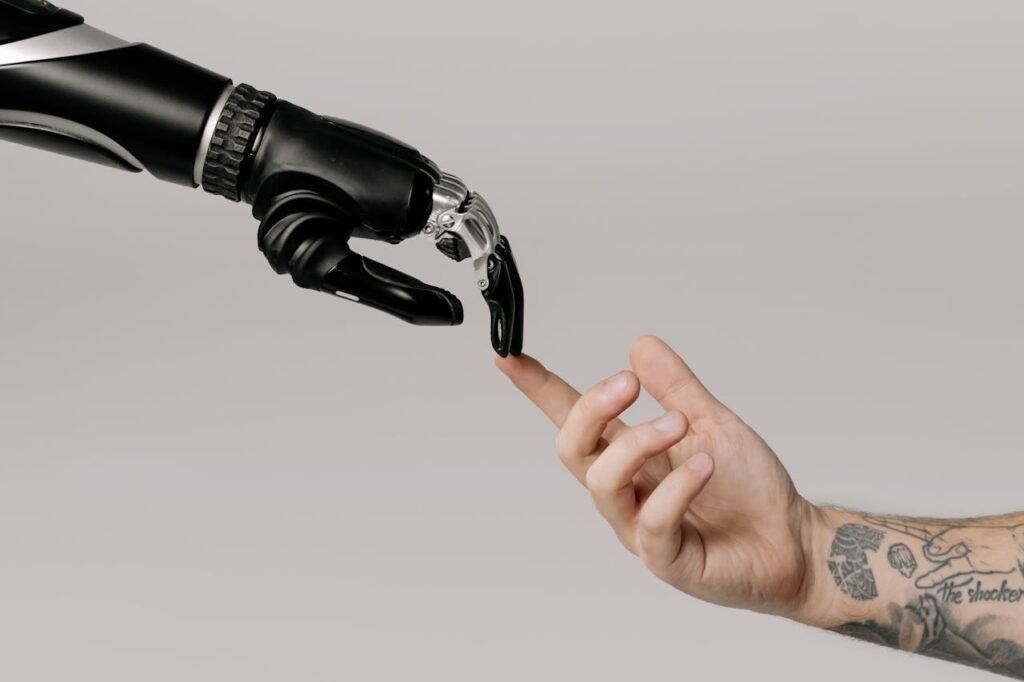Daily activities that once felt natural—like holding a cup, turning a doorknob, or buttoning a shirt—can suddenly feel complex after an upper-limb amputation. For seniors, this adjustment can be even more challenging. The body heals slower, muscles may feel weaker, and tasks that require grip strength or coordination often demand extra effort.
But with today’s new generation of prosthetics, especially those designed for comfort and simplicity, life can regain its rhythm. Modern upper-limb prosthetics are lighter, smarter, and easier to use. They require less energy to control, and they’re built to support the way seniors actually live—through relaxed, natural movement rather than force.
At RoboBionics, we’ve seen how the right prosthetic, paired with the right training, can restore independence with grace. The secret lies not in doing more but in doing smarter—learning low-effort techniques that make daily tasks smoother and stress-free.
This article explores how seniors can make the most of their prosthetics for grip, comfort, and everyday living. We’ll look at practical routines, easy ways to build confidence, and how technology like the Grippy™ Bionic Hand is reshaping what’s possible for seniors in India and beyond.
Understanding Upper-Limb Prosthetics for Seniors
How Upper-Limb Prosthetics Work
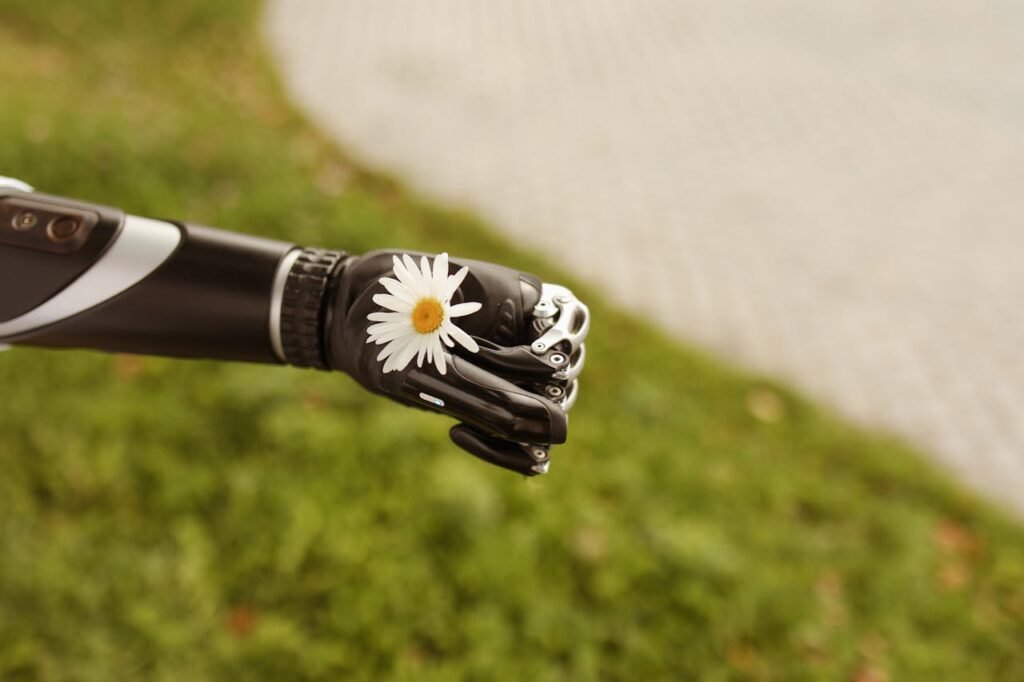
Upper-limb prosthetics replace or support the function of the hand, wrist, or arm after amputation. They come in different types—mechanical, body-powered, and myoelectric. Each has its own way of turning intention into movement.
Mechanical or body-powered models use cables and simple levers that respond to shoulder or elbow movement. Myoelectric prosthetics, like RoboBionics’ Grippy™ Bionic Hand, use natural muscle signals to control movement. When a user flexes a muscle, sensors detect the signal and trigger the hand to open, close, or grip.
This muscle-driven control feels more intuitive for seniors. It removes the need for large physical effort, making daily activities smoother and less tiring.
Why Seniors Need a Different Kind of Design
Seniors often face unique challenges—reduced grip strength, slower reflexes, and less muscle tone. Their prosthetic must adapt to these realities instead of expecting them to perform like younger users.
That’s why lightweight materials, simple control systems, and comfortable sockets matter so much. A prosthetic should feel like an extension of the body, not a burden. For older adults, that comfort and effortlessness make the difference between frustration and freedom.
The Emotional Side of Adapting
Adapting to a prosthetic is not just physical—it’s emotional. Many seniors experience hesitation or self-consciousness at first. Some worry about how they’ll perform tasks, while others fear being seen as dependent.
A prosthetic can restore not only function but dignity. The moment seniors can pour a cup of tea, write their name, or hold a loved one’s hand again, confidence returns. The emotional lift from that moment often sparks faster physical recovery too.
Myoelectric Systems and Ease of Use
Myoelectric prosthetics read electrical signals from muscles that remain after amputation. These signals are tiny but precise. When a senior tries to flex or extend their missing limb, the prosthetic responds immediately.
The Grippy™ Bionic Hand takes this concept further. It uses advanced sensors that interpret even soft muscle activity, so seniors don’t have to strain. This reduces fatigue and makes operation almost effortless.
Over time, muscle memory forms, allowing users to perform daily actions without conscious thought. This natural flow is what makes myoelectric systems so comfortable for long-term use.
The Importance of Lightweight Materials
Older adults often have joint stiffness or shoulder pain. Heavy prosthetics can worsen this discomfort. Lightweight designs reduce pressure on the back and shoulders, allowing longer wear.
The Grippy™ Bionic Hand is made with advanced polymers and aluminum, offering strength without bulk. Seniors can wear it for hours without feeling weighed down. That lightness translates directly into freedom—freedom to move, work, and live without pain.
Fit and Comfort Are Everything
Even the most advanced prosthetic fails if it doesn’t fit right. Seniors need custom-fitted sockets that accommodate delicate skin and changing muscle shape. A poor fit can cause irritation or slipping, leading to reduced use.
Frequent checkups with a prosthetist help keep alignment and pressure points balanced. Comfort creates trust, and trust makes consistent use possible. Once seniors feel at ease, they stop thinking about the prosthetic altogether—and start focusing on living again.
Why Seniors Should Start Slow
Learning to use a prosthetic takes time. Muscles must adapt, and coordination must rebuild. Seniors benefit most from slow, steady training with short sessions.
RoboBionics often recommends pairing early use with gamified rehab exercises—interactive, enjoyable activities that improve control and confidence. It’s not about speed; it’s about comfort, consistency, and joy in progress.
Why Low-Effort Grip Matters
The Challenge of Grip Strength in Aging
As we age, grip strength naturally declines. The muscles and tendons in the hand lose elasticity, and joints become stiffer. For seniors with prosthetics, this means every small task—holding utensils, turning taps, writing—requires more energy than before.
A low-effort grip reduces strain and helps seniors perform these movements comfortably. It saves energy and allows them to do more throughout the day without feeling fatigued.
What Low-Effort Grip Really Means
A low-effort grip doesn’t mean a weak hold—it means efficient control. The prosthetic should respond to light muscle activity instead of forceful contractions. With modern technology, even a gentle signal can produce a firm, stable grasp.
This concept is at the heart of the Grippy™ Bionic Hand. It listens to the user’s body, adjusting grip force automatically based on what they’re holding. Seniors don’t have to overthink or overexert—they just move naturally.
Common Struggles with Traditional Prosthetics
Traditional mechanical prosthetics often rely on cables that demand high physical effort. Seniors may struggle to open or close the hand, especially if they have shoulder pain or arthritis.
The repetitive strain of pulling cables can discourage regular use. Many users end up removing the prosthetic frequently, slowing down their adaptation process.
Myoelectric systems solve this problem by removing the need for mechanical motion. The effort moves from muscle strain to gentle control, which makes a world of difference for senior comfort.
How Smart Grip Adjustments Help
The Grippy™ Bionic Hand is designed with adaptive grip control. It senses how firmly an object should be held. If it detects a delicate item like paper or a cup, it automatically lightens the grip. For heavier objects like tools, it tightens just enough to secure them.
This smart response prevents slips without over-squeezing. Seniors can handle objects confidently without worrying about breaking or dropping them. The prosthetic handles the adjustments—they simply guide.
The Power of Finger Independence
Low-effort grip is also about flexibility. Hands rarely move as one stiff piece; each finger plays a role. Multi-articulating prosthetics like Grippy™ allow finger independence, giving users the ability to perform fine tasks like zipping, typing, or picking up coins.
This natural range of movement restores both function and grace. Seniors can move freely, with fluidity that feels closer to real hand motion than ever before.
Reducing Fatigue for Longer Use
Every movement costs energy. When prosthetics require constant muscle activation, fatigue builds quickly—especially for older users. Over time, this can lead to shorter wear periods and reduced consistency.
Low-effort prosthetics save that energy. They allow seniors to go through their daily routines—cooking, reading, gardening—without the feeling of strain. The result is not only more productivity but a sense of ease and confidence that transforms quality of life.
The Psychology of Effortless Movement
When seniors realize that a prosthetic doesn’t have to be exhausting, something remarkable happens. Their hesitation fades. They start experimenting, exploring, and using the hand in new ways.
This emotional shift builds trust. The prosthetic becomes less of a tool and more of a partner. Each small success—holding a pen, flipping a switch—strengthens this bond, creating lasting motivation.
The Link Between Touch and Effort
Without real touch feedback, users often overexert their grip because they can’t sense how much force they’re applying. RoboBionics’ Sense of Touch™ technology bridges that gap.
It delivers gentle feedback signals that mimic the feeling of holding objects. Seniors can sense contact, pressure, and texture through subtle cues. This awareness eliminates the need to “guess,” saving both energy and time.
The less they strain, the more naturally they move—and that’s what low-effort living is all about.
Practical Training for Daily Tasks
Starting with Familiar Motions
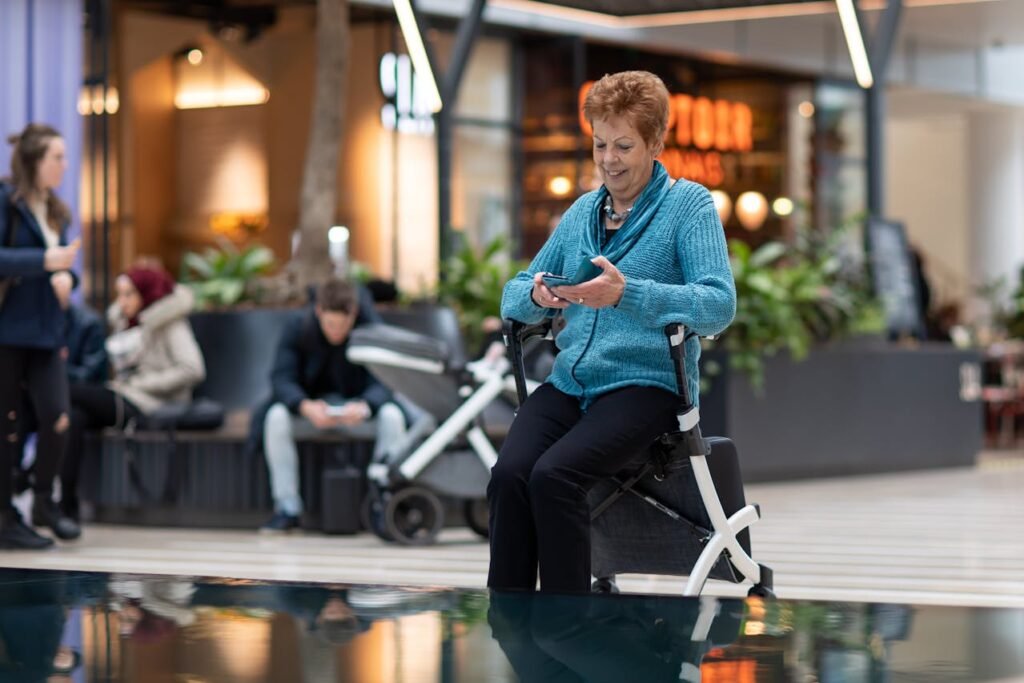
The best way for seniors to adapt to an upper-limb prosthetic is by beginning with movements they already know. Familiar actions—lifting a cup, folding a towel, or picking up a book—help the brain connect old habits with new sensations.
At first, every motion feels mechanical. But repetition builds comfort. Practicing these daily tasks in short, relaxed sessions strengthens muscle coordination without fatigue. A good rule is to focus on five to ten minutes of gentle training twice a day instead of one long session.
These small bursts give the brain time to rest and learn. Over days, motions become smoother, and the prosthetic feels more like a natural limb rather than an attachment.
Finding the Best Position for Control
Posture plays a big role in grip strength and control. Sitting upright with shoulders relaxed allows smoother myoelectric signals. If the body is tense, the sensors can misread muscle activity, leading to jerky movement.
Before starting an activity, seniors should check their posture. The back should be straight, the shoulders open, and the neck free of strain. A few deep breaths calm the muscles and prepare the mind for better control.
If the limb feels heavy or unbalanced, a prosthetist can adjust the alignment. Even a few millimeters of change can make gripping easier and more natural.
Learning Finger Control Through Small Objects
The most effective way to develop precision is through small, lightweight items. Practice with objects like marbles, paper clips, coins, or buttons. Begin by simply touching or nudging them, then progress to picking them up.
The goal isn’t speed—it’s finesse. Seniors should focus on controlling the pressure, learning when to relax the grip, and avoiding over-tightening.
For those using the Grippy™ Bionic Hand, each finger moves independently, which makes such fine exercises both possible and rewarding. Over time, these drills improve coordination for tasks like holding cutlery or using mobile phones.
Relearning Everyday Tools
Many seniors want to regain the ability to handle common tools—pens, spoons, keys, and brushes. The trick lies in adapting grip technique rather than forcing the old way.
For writing, start with a thick pen or marker, which is easier to hold than a thin pencil. For eating, lightweight cutlery or those with cushioned handles reduce fatigue. The idea is to work with the prosthetic’s strengths, not against them.
In the beginning, some tasks will feel slow. That’s natural. What matters is control, not speed. Each successful repetition builds trust in the prosthetic and confidence in the user.
Low-Effort Kitchen Practice
Cooking can feel intimidating at first, but it’s a perfect training ground. Start with simple, low-risk actions like holding vegetables while slicing with the other hand, stirring with a ladle, or opening drawers.
The Grippy™ hand’s adaptive grip helps with uneven shapes, allowing safe handling without squeezing too tightly. Seniors should avoid lifting heavy pots early on and instead focus on balance and coordination.
With time, even pouring water or serving food becomes second nature. The goal is to rediscover rhythm—using both hands together in smooth, comfortable flow.
Gradual Strength Conditioning
While myoelectric systems don’t need large muscle effort, seniors still benefit from gentle conditioning. Light resistance exercises help keep the upper arm and shoulder stable, supporting prosthetic control.
Simple moves like squeezing a soft ball, raising the arm slightly forward, or rotating the shoulder slowly build endurance. Always follow a physiotherapist’s guidance to prevent strain.
Consistency is key. A few minutes each day of calm, slow motion creates lasting strength without pain.
Practicing Balance and Coordination
Even for upper-limb prosthetic users, balance matters. When one side of the body moves differently, it changes how the spine and core muscles respond.
Practicing balance exercises—standing tall, turning gently, or walking with the prosthetic arm swinging naturally—keeps the body aligned. It also prevents shoulder or back fatigue that can develop from compensating for new movement patterns.
When balance improves, grip control naturally follows. The whole body learns to move as one, restoring fluidity to daily life.
Overcoming Frustration
It’s easy to get discouraged in the early days. Seniors might drop things, press too hard, or move too slowly. But every misstep is part of learning.
Progress doesn’t disappear—it builds quietly. By focusing on small goals, like gripping a cup steadily or buttoning one shirt, seniors gain steady confidence.
The prosthetic only becomes second nature when used often, not when feared. Compassion and patience are the best training partners.
How to Use Upper-Limb Prosthetics Efficiently for Everyday Life
Dressing Made Easier
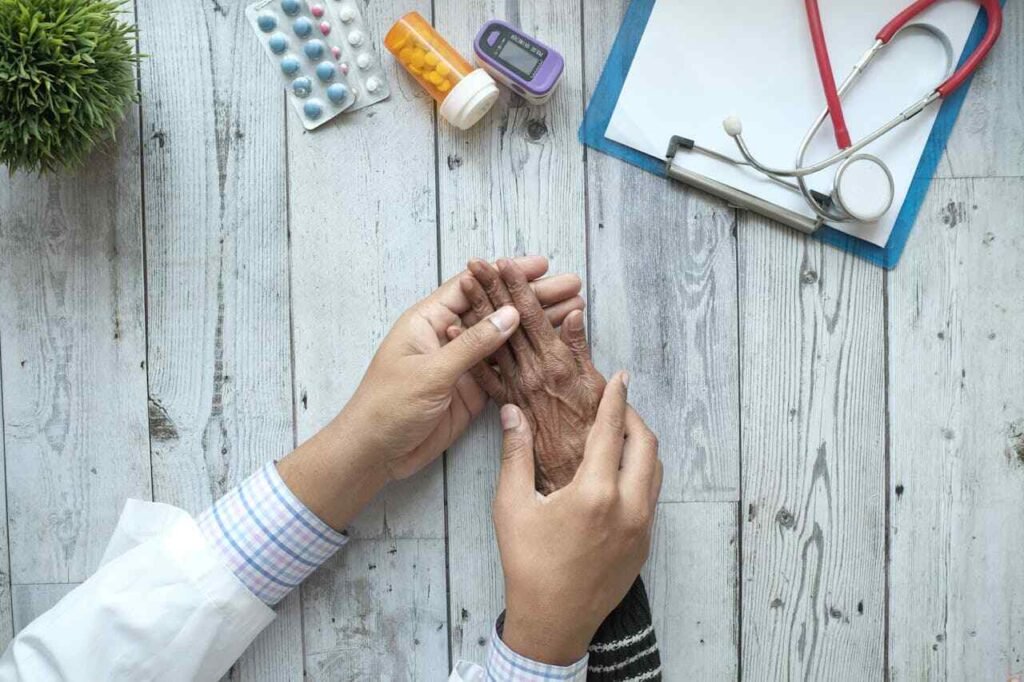
Getting dressed is one of the first areas where seniors want independence. Start with loose, comfortable clothes. Use the prosthetic to hold or stabilize the fabric while the natural hand guides the arm through sleeves.
With practice, the prosthetic can assist in pulling zippers, adjusting collars, or holding buttons in place. For buttoning, a simple trick is to use the prosthetic hand to hold the fabric steady while the other hand slips the button through.
Elastic waistbands, Velcro fastenings, and wide openings help reduce frustration. The focus should always be on comfort, not complexity.
Gentle Grooming Routines
Tasks like combing hair, brushing teeth, or shaving become much easier with a prosthetic hand designed for fine grip. Seniors can hold a comb, stabilize a toothbrush, or open containers with one hand supporting the other.
For those using Grippy™, the hand’s grip adapts automatically to the object’s size, which prevents slippage. Seniors should take their time, focus on rhythm, and rest between steps if needed.
Even simple self-care routines create a sense of independence that lifts confidence. These moments of autonomy make the prosthetic more than a device—it becomes a daily companion.
Managing Utensils and Dining
Eating is one of the most rewarding areas of regained independence. Seniors should start by holding lightweight, rounded utensils with the prosthetic and using their natural hand for control.
With myoelectric hands, the grip pressure adjusts automatically, allowing the utensil to stay steady without squeezing. Practice with soft foods at first to reduce mess and build coordination.
For cups, insulated or non-slip versions prevent spills. Placing them close to the body minimizes reaching effort. The goal is ease—eating slowly and comfortably without worrying about dropping items.
Using Phones, Remotes, and Devices
Modern prosthetics make it easier to handle technology. With multi-grip functionality, seniors can hold a phone, type messages, or control a remote. Touchscreen styluses are especially useful for smoother interaction.
Seniors should place devices on stable surfaces rather than holding them for long periods. This prevents fatigue and allows the prosthetic to perform light, precise tasks comfortably.
Over time, these small successes restore digital confidence—staying connected to family and friends becomes joyful again.
Light Household Chores
Simple household activities can double as natural training. Tasks like folding clothes, wiping tables, or carrying light items help reinforce coordination.
When cleaning, use long-handled dusters or mops that minimize the need to bend. Let the prosthetic assist with stabilization rather than full lifting early on.
Rearranging frequently used items to waist height reduces effort. Seniors can adapt their homes to make chores easier, allowing them to focus on comfort and safety rather than strain.
Writing and Reading Assistance
Writing is often one of the most emotional milestones in recovery. Seniors can start by holding pens with soft grips or elastic loops. The Grippy™ hand’s steady, adaptive pressure helps maintain hold without slipping.
For reading, the prosthetic can hold a book open or stabilize pages while the other hand turns them. Light e-readers are another great option—they reduce fatigue and offer large fonts for easy visibility.
These moments—writing a note, signing a letter, or reading independently—restore a sense of self that no therapy session can replace.
Gardening and Outdoor Activities
Gardening provides both exercise and relaxation. Using lightweight tools with cushioned handles keeps activities gentle on joints and muscles. The prosthetic can assist by stabilizing pots or holding stems while pruning.
Avoid heavy lifting early on; instead, focus on balance and gentle coordination. The combination of sunlight, movement, and focus brings mental peace and confidence.
Outdoor activities like short walks, light stretching, or simple yoga poses also strengthen balance and energy—both essential for smooth prosthetic use.
Rest and Maintenance
Just as the body needs rest, so does the prosthetic. Seniors should remove it periodically during the day to let the skin breathe and muscles relax. Cleaning the liner and socket regularly keeps hygiene in check and prevents irritation.
Check for signs of wear or discomfort after each day’s use. Early maintenance prevents major issues later. If something feels off—pressure points, slipping, or unusual sound—contact a prosthetist for adjustment.
A well-cared-for prosthetic lasts longer and stays more comfortable. Caring for it daily builds both reliability and peace of mind.
Reducing Overuse of the Sound Arm
It’s natural for seniors to rely more on their sound arm at first, but overuse can cause shoulder or wrist strain. Alternating tasks between both sides ensures even muscle activity and prevents long-term fatigue.
Start small—use the prosthetic for one simple action each morning, like lifting a cup or holding paper. Increase usage gradually as confidence grows. Balance between both arms leads to healthier posture and overall comfort.
The Value of Restorative Rehabilitation
Rehabilitation doesn’t stop once the prosthetic fits well. Gentle, ongoing therapy helps maintain strength, joint health, and nerve coordination. Gamified rehab programs, like the ones offered by RoboBionics, keep therapy engaging and motivating.
Each session provides measurable progress, turning routine exercise into enjoyable play. For seniors, this approach brings both physical benefit and emotional joy—a crucial combination for long-term success.
Maintaining Comfort, Emotional Wellbeing, and Long-Term Use of Prosthetics
Why Comfort Is the Foundation of Success
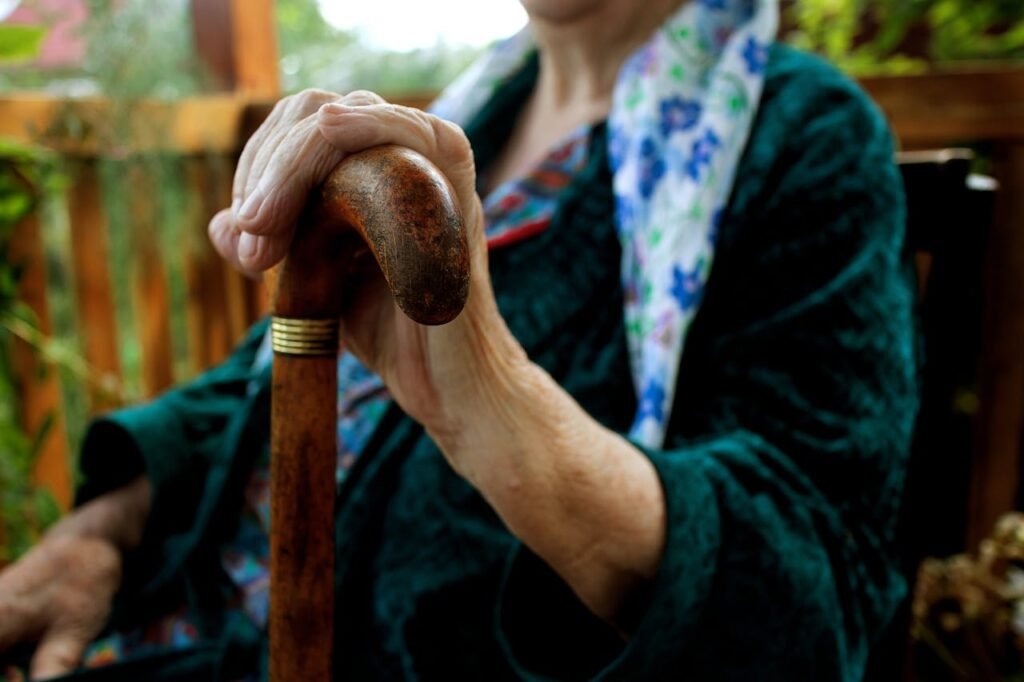
For seniors, comfort is not a luxury—it’s the key to using a prosthetic confidently every day. If a device causes even mild irritation or pressure, it discourages regular wear and breaks consistency. Without consistency, coordination weakens, and progress slows.
A well-fitted prosthetic should feel balanced and natural. There should be no pinching, slipping, or hot spots on the skin. If any of these appear, small adjustments by the prosthetist can make a big difference.
Comfort leads to trust. Once seniors trust their prosthetic, they move without fear, focus less on the limb, and focus more on living fully again.
Keeping the Skin Healthy
The skin around the residual limb is sensitive, especially in older adults. Regular cleaning, moisturizing, and inspection prevent issues like redness or rashes. The liner should be washed daily with mild soap and dried completely before use.
If the skin feels sore after wearing the prosthetic, short breaks help. Removing it for 15–20 minutes allows air circulation and restores comfort. Seniors should avoid applying thick creams right before wearing the prosthetic, as residue can interfere with fit and cause slippage.
For those in warm or humid climates, talc-free powders can reduce sweat buildup. Clean skin equals better sensor contact and smoother function.
Routine Adjustments and Professional Care
The body changes over time—muscle tone, swelling, and posture can shift. Seniors should schedule regular follow-ups every few months to ensure the socket and alignment still fit well.
A small refit can prevent future complications. Ignoring discomfort often leads to overcompensation by the sound arm or poor posture. This, in turn, creates fatigue or shoulder pain.
Regular visits also keep the technology tuned. Sensors, wires, and motors should always respond accurately to muscle signals. A simple service check ensures every component stays dependable.
Managing Shoulder and Back Strain
Wearing a prosthetic changes how the body distributes weight. Seniors may unknowingly tense their shoulders or lean slightly to one side to balance. Over time, this can cause discomfort or stiffness.
Gentle stretching and posture exercises help prevent strain. Standing tall against a wall, doing slow shoulder rolls, and breathing deeply reset body alignment. Even a few minutes daily brings relief and flexibility.
If stiffness continues, consulting a physiotherapist ensures exercises target the right muscles safely.
Rest Periods and Daily Rhythm
Seniors should build natural breaks into their day. It’s not necessary—or even advisable—to wear the prosthetic from morning to night without pause. Alternating use and rest keeps skin and muscles healthy.
Removing the prosthetic during meals or quiet reading time allows relaxation. The key is balance—enough wear time to maintain coordination, but enough rest to avoid fatigue.
Over weeks, most users find their ideal rhythm: when to wear it, when to rest, and when to exercise. Listening to the body keeps both energy and comfort stable.
How Mental Calm Affects Physical Control
A calm mind improves control. Stress causes muscle tension, which can confuse myoelectric sensors and disrupt grip accuracy. Seniors who feel anxious may find their prosthetic reacts unpredictably—not because of a malfunction, but because stress changes muscle signals.
Simple relaxation methods—like slow breathing, light music, or even short meditation—help keep signals consistent. A relaxed body sends clearer cues, resulting in smoother motion.
Using the prosthetic during quiet, enjoyable moments reinforces comfort and confidence. It turns practice from duty into peace.
Overcoming Emotional Barriers
For many seniors, the emotional side of recovery is as important as the physical. Some feel self-conscious in public, others fear dependence, and a few may grieve the loss of their original limb for years.
Acknowledging these feelings is healthy. Talking with family, counselors, or support groups brings perspective and courage. At RoboBionics, we’ve seen countless seniors rediscover joy through simple acts—writing a note again, holding a grandchild’s hand, or cooking independently.
Each success story begins with patience. Healing takes time, and emotional acceptance often leads to faster physical adaptation.
The Role of Family and Caregivers
Family members play an enormous role in long-term success. Their support builds motivation and safety. Helping with daily setup, encouraging consistent use, and celebrating progress all create a positive environment for recovery.
However, independence should always be encouraged. Instead of doing everything for the senior, caregivers should guide and observe, letting them attempt tasks themselves. This balance of support and space builds true confidence.
Patience is key. Small improvements, even a few seconds of steadier grip or one button fastened independently, deserve praise. These moments build self-worth and joy.
Staying Motivated for Long-Term Use
Motivation tends to waver over time, especially once basic comfort is achieved. Gamified rehabilitation or goal-based therapy can help maintain consistency. RoboBionics’ rehabilitation app offers interactive exercises that feel playful but build real muscle memory.
Setting simple goals also works well: lifting a cup steadily for a week, writing for five minutes, or cooking one meal independently. Each milestone reached brings pride and momentum.
It’s also helpful to rotate activities—some days focused on fine motor control, others on endurance. This variety keeps practice interesting and engaging.
Managing Prosthetic Maintenance at Home
A few minutes of care each day ensures long-term reliability. Wipe the outer surface with a damp cloth, check joints for debris, and make sure all moving parts feel smooth. Never use harsh chemicals or soak the prosthetic in water.
When storing overnight, keep it on a clean, dry surface away from direct sunlight. Batteries should be charged regularly but not overcharged. Following the manufacturer’s guidelines ensures years of dependable performance.
A well-maintained prosthetic performs predictably, and predictability builds trust—something every senior values deeply.
Nutrition and Energy Support
Good nutrition supports both nerve health and muscle endurance. Seniors should eat balanced meals with lean protein, fiber, and hydration. Foods rich in vitamin B12, calcium, and magnesium keep nerves active and muscles relaxed.
Hydration helps electrical signals travel smoothly through the body, which improves myoelectric control. Even mild dehydration can make muscles feel weak or unresponsive.
A small snack before therapy, like fruit or yogurt, provides steady energy without heaviness. Nutrition might seem unrelated to prosthetic use, but it fuels the entire system that drives control.
Sleep, Recovery, and Healing
Rest is the body’s repair time. Muscles that work during prosthetic use need nighttime recovery. Seniors should aim for consistent, high-quality sleep in a calm, cool room.
If limb pain or discomfort interrupts sleep, adjusting socket fit or pillow position may help. A light massage around the shoulder or upper arm before bed can also ease tension.
Better sleep sharpens focus, stabilizes mood, and improves the fine control needed for smooth prosthetic movement.
Reconnecting with Hobbies and Life
A prosthetic should bring seniors back to the things they love—gardening, painting, reading, or cooking. Once basic tasks feel comfortable, reintroducing hobbies strengthens both skill and happiness.
The trick is to modify rather than give up. Use adaptive tools, lighter equipment, or different techniques. Many seniors discover new ways to enjoy old passions—and sometimes even new hobbies that match their comfort level.
Rediscovering joy outside of therapy gives meaning to the recovery journey. That sense of purpose keeps motivation alive long after training ends.
When to Seek Professional Help
If pain, swelling, or difficulty with control appears suddenly, seniors should contact their prosthetist immediately. Small discomforts can be resolved easily when caught early.
Regular reviews with physiotherapists and occupational therapists ensure progress stays on track. These professionals can also recommend posture corrections or gentle exercises to match changing needs.
Support is always available. Asking for help isn’t a setback—it’s a smart step toward safer, happier use.
Conclusion
Gentle Strength, Lasting Independence
Upper-limb prosthetics aren’t about power—they’re about precision, comfort, and independence. For seniors, the goal is effortless living, not perfect performance. With patience and steady practice, every motion becomes smoother and more natural.
Each small action—a stable grip, a steady lift, a careful hold—adds up to big changes. The body adapts, the mind trusts, and life begins to flow again.
A Partnership Between Person and Technology
Modern prosthetics like RoboBionics’ Grippy™ Bionic Hand make recovery easier by responding to the body’s natural rhythm. Low-effort control, lightweight design, and tactile feedback all come together to support comfort and confidence.
Technology works best when it feels human—and our mission is to make that connection seamless.
The Confidence of Everyday Wins
Every time a senior uses their prosthetic—no matter how simple the task—they’re strengthening both body and spirit. The more they use it, the more natural it becomes. Independence doesn’t return all at once; it grows quietly through daily effort.
At RoboBionics, we’ve seen that growth bring back smiles, laughter, and dignity. And that’s the real purpose of innovation—to make life feel full again.
Ready for the Next Step
If you or a loved one is exploring prosthetic options or wants guidance on adapting daily routines, our team is here to help. You can book a free demo and talk with experts who understand both the science and the heart of recovery.
Take the first step toward ease and independence at https://www.robobionics.in/bookdemo/.



